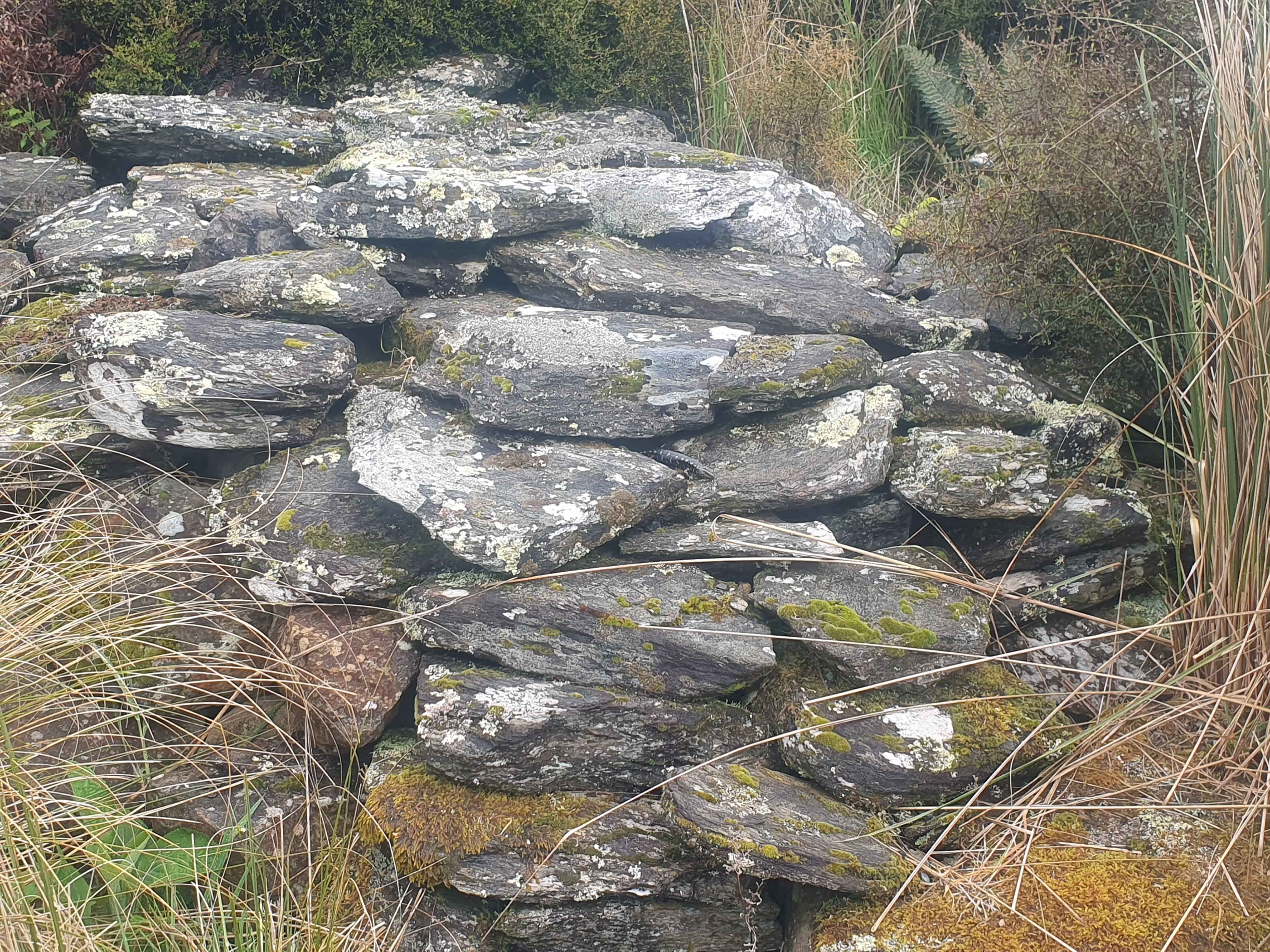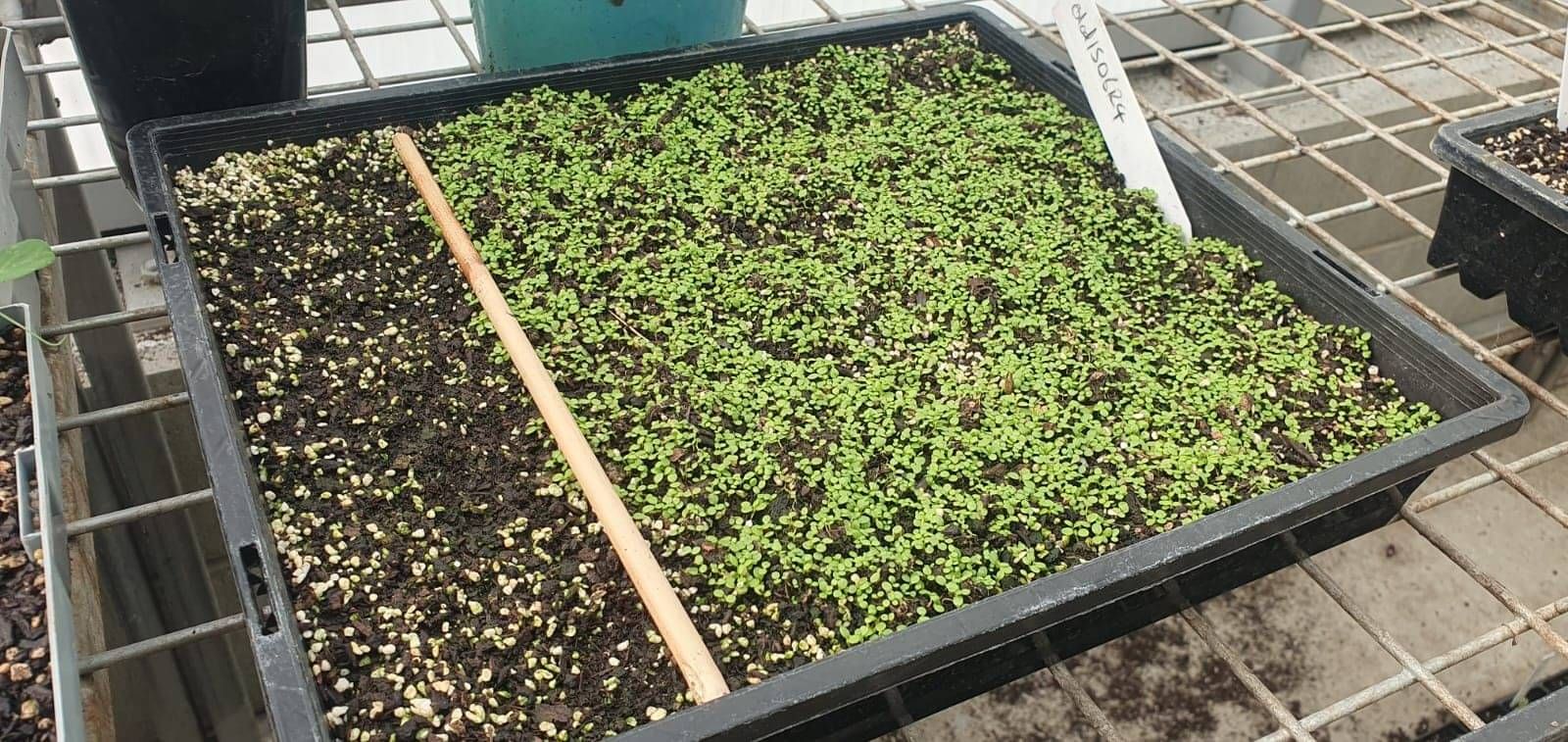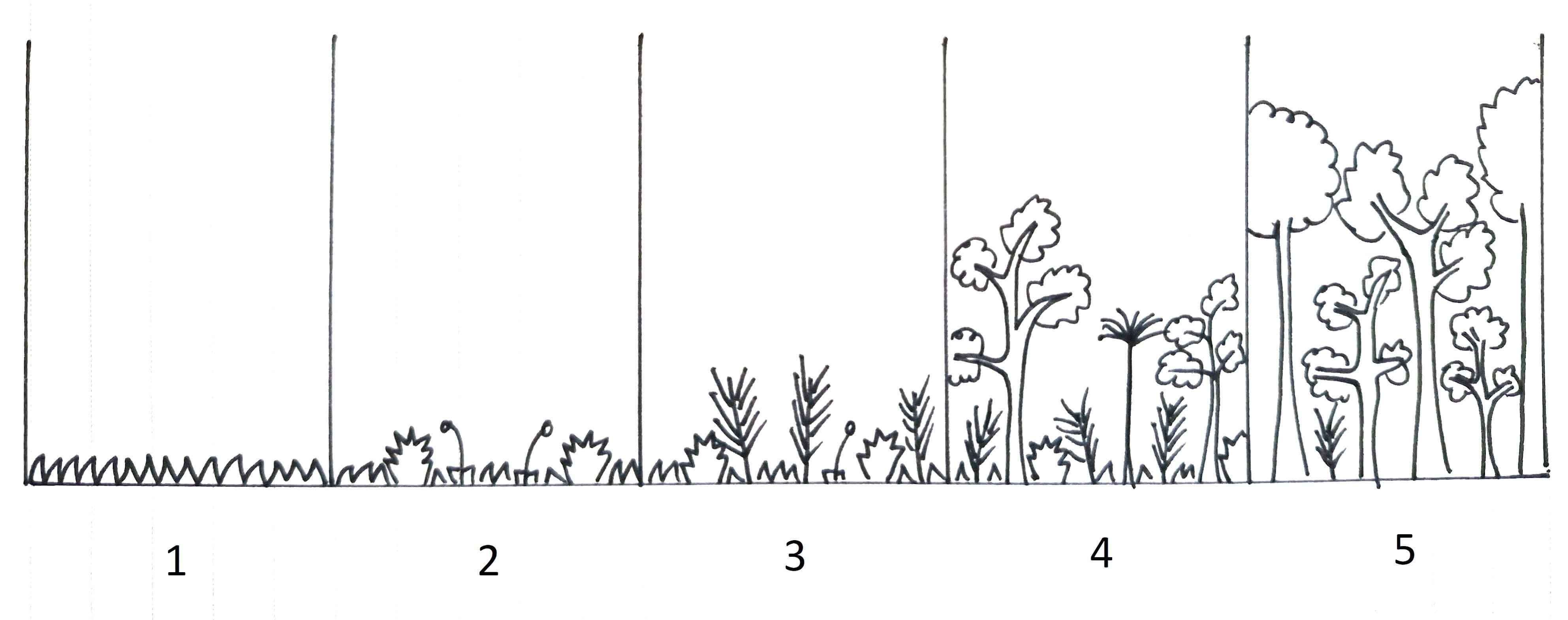Ecological succession in Central Otago and its use in planting and conservation
Succession is a concept in ecology. It simply means the change in the kinds of species and their distribution in an environment over time, and is often characterised by a kind of progressive plant “sequence”, disrupted by disturbances. The environment could be on a large or small scale - an entire island or forest, or your backyard or lifestyle block. A knowledge of ecological succession helps us to read the history of the land we live in and care for. It can help give deeper knowledge and confidence when selecting and caring for plants.
On a large scale, the level of plant populations, one might think of succession in an entire forest community regrowing after a fire. This is a community succession, where a whole area has a synchronous community succession following a disturbance. On a small scale, the level of individuals, a single tree falling is a disturbance that triggers a minor succession where new plants emerge to fill its space.
These are examples of secondary succession, which follows a disturbance event, and with which this essay is mostly concerned. Primary succession would be in new land without soil. Fantastic examples of primary succession in NZ can be observed on a trip to Rangitoto Island, a very young volcanic island in the Hauraki gulf. More locally here in Central Otago, sluice tailings left by the gold diggers of the 19th century in which all soil was washed away can be thought of as a site of primary succession - here we see lichens as pioneer species which, combined with erosion from wind and rain, will eventually form a soil in which more familiar vascular plants will grow. These tailings could also be thought of as mimicking accumulating talus (rockfall) at the bottom of slopes, and a number of dryland plants have adaptations to surviving in this type of substrate (Rogers, Walker and Lee, 2005, The role of disturbance in dryland New Zealand: past and present).

Broadly speaking, we can think of succession as following a pattern over time - as conditions and resources change, so does the species distribution. In Aotearoa New Zealand generally, the present distribution of species is strongly related to the Pleistocene ice ages 20000 years ago, and the migration of plant species following it. As the sea surrounding NZ buffers temperature changes, the movement of vegetation over the glacial periods was mostly up and down mountains, in a quite predictable manner - a result of successional processes occurring over millennia as the species composition followed environmental changes.
When considering succession as it relates to plant conservation and revegetation/reforestation efforts, be they planting a mountain side or your home garden, we can first examine the three main factors that have triggered and/or constrained widespread disturbance events across Central Otago in the modern era: fires, agriculture, and introduced herbivores. Let us explore each in turn.
Fire is a natural process in all regions with dry and hot seasons. In the current interglacial period but prior to human colonisation, fire (started by lightning strikes) was the only disturbance event that would trigger community wide disturbances in Central Otago. However, fires were very rare and infrequent here and only increased with human colonisation. Given that the formation of stable, “climax” plant communities (where the rate of change in species has slowed to a timescale near imperceptible to humans - think a mature forest) will take centuries to develop, one can think of the current flora of Central Otago as being largely mediated by succession following fires started by early settlers.
As with fire, mass disturbances by clearing forested land and replacing it with pasture also increased with human colonisation. European-style agriculture is largely based on plant monocultures, which lead to homogeneity both above and below the topsoil and often depletion of organic matter, as well as introducing pathogens, diseases and weeds (the tree weeds in Central Otago are particularly troublesome and might be more prevalent by mass than small ephemeral species, if we exclude grass). A further effect of agriculture on succession in Central Otago was by the introduction of pasture grasses, which dominate entire landscapes.
Lastly, mammalian herbivores were also introduced with European colonisation. The ecological effects of grazing depend on the specificity of the grazing, which decreases with increasing animal size, and movement constraints on the animals eg fencing. For an example of domesticated animal induced disturbance events on a large scale, the practice of driving vast mobs of sheep over alpine areas that was widely practiced in the early days of NZ pastoralism destroyed the native alpine herbfields.
Generally speaking, the lack of resistance to grazing of native clump-forming grasses (tussocks that evolved without the presence of mammalian grazers) has led to a general replacement of tussock with exotic turf grasses, which have co-evolved with mammalian grazers. We also can’t get away here without talking about rabbits, which by eating seedlings affect landscape-wide successionary processes just as much as larger herbivores.
We can see how there is a direct link between disturbance and conservation outcomes in the example of our native Olearia (Tree daisies). In a pre-human settlement land state, slips and alluvial washes might have been the main disturbance event by providing bare soil for Olearia seeds to germinate. Now, introduced exotic grasses (pasture grasses) will instead colonise the bare soil, with the end result of many species of Olearia becoming endangered. This effect leads to knock-on reductions in biodiversity.

Now, we have established those main factors of disturbance, how can we apply the successionary processes that follow in our own planting work? First, let’s take a look at an example of a succession sequence that might follow after a pasture in Central Otago is left fallow for a few centuries:
Annual weeds will grow. These common wild plants in arable land tend to have a common set of traits, most importantly higher growth and photosynthesis rates. Examples include annual meadowgrass, chickweed, cleavers, and native annual plants.
Herbaceous perennials will follow. These and the later post-annual successionals can germinate in shade and grow in low light intensities. Examples include weeds like dock, dandelions, thistles and most pasture grasses. Natives include tussock grasses, native carrot, Acaena, alpine plants, spaniards, Raoulia, Scleranthus.
Shrubs. These along with the perennials above build soil structure and give protection and cover for the germination of larger species. This is about as far as most regenerating plant communities in Central Otago have been able to get so far, and many are arrested in this stage due to lack of seed source for larger tree species. Examples include Ozothamnus, Dracophyllum, Olearia, Coprosma, Discaria toumatou.
Early successional trees. Multilayered foliage, higher rates of reproduction and more efficient seed dispersal. Examples include Sophora microphylla, Pseudopanax ferox and crassifolius, Metrosideros umbellata, Olearia avicenniaefolia, Griselinia littoralis, Aristotelia serrata.
Late successional trees. Monolayered leaves in “shell”. Larger seeds, lower dispersal, long juvenile phases and lifespans. Examples include Matai, totora, miro, beech, kahikatea, rimu. These forest giants also help to create the conditions for diverse sub-canopy communities.
The intermediate stages are known as “seral”, with the final stage known as “climax”.

This sequence illustrates how succession involves replacement of species, not just addition. Another phase-based understanding of succession is used by farmers to group the plants into three broad groups based on how their landscape is performing: Accumulators (accumulate fertility in early and mid succession), Exploiters (grow because of the fertility produced by an earlier plant), and Balancers (end of the succession and grow when fertility has become too high).
The obvious way to use this successiona; knowledge is in planting choice. One can see how in the more arid areas of Central Otago planting large native trees eg beech into greenfield land without major human inputs of irrigation, protection and maintenance is bound to fail. However, if one begins with an earlier stage in the successional sequence eg shrubs, one can create an environment where larger trees can actually begin to thrive.
We touched above on how disturbance events change soil conditions. This is of particular importance when considering a successional process. Each “level” of succession creates the conditions required for the next level. Therefore when you jump levels in the sequence, for example planting Fuscospora beech into paddocks, the soil is not ready to support this plant. If you plant, for example, kanuka/Kunzea serotina first, they will begin to change the soil culture and structure. It has been proposed that the mutualism between kanuka, manuka, beech and the mycorrhizae (symbiotic soil fungus that live in association with plants) they share contributes to the ability of kanuka and manuka to help establish beech forests (Weijtmans et al 2007, Occurrence of arbuscular mycorrhiza and ectomycorrhiza on Leptospermum scoparium from the Rakaia catchment).
On the topic of soil culture, the composition of plant communities is related to the composition of soil microbe communities. Native plant communities particularly differ with mycorrhizal species present. Ectomycorrhizal networks on nutrient-poor soil, like those found in many native plant communities, can dominate such that successful plant species must either “plug in” or have their own method of producing nitrogen (Lack, 2002, Plant Ecology and Conservation). On large scale restoration projects, potential mycorrhizal features of the community should be considered - for example, in exotic grasslands endomycorrhizae may dominate that will inhibit the ectomycorrhizae that are symbiotic with native tree species.
Also many shrub species, mid level in the example successional sequence given above, provide services to other plants and thus directly or indirectly promote the growth of later plants. For example, matagouri/Discaria toumatou are nitrogen fixers which increase nutrients for surrounding plants in nutrient poor areas, and are highly important to build fertility for later successions. The invasive gorse plant provided a similar function in its native environment in Scotland.
There is another, and potentially even more powerful way to exploit the successional sequence to improve our conservation outcomes. This is by utilising a cascade/feedback effect, where a process increasing species richness starts a second, and so on. One example of this would be a reforestation practice where we can plant “nuclei” of fruit-bearing plants that attract seed-carrying herbivores eg birds.
Let’s break that down. First we plant out our nuclei, small plant communities that act as islands in a barren area. These islands attract birds which feed on the berries. The birds bring with them seeds from other pockets of bush, which grow and increase the species richness of the planting. These in turn attract more birds, and so on goes the cascade, accelerating all the time until the bounds of the reforestation area are met. This also shows how animal succession usually follows the nature of the plant community, though there are rare examples of it being the other way around.
It’s worth noting that birds, specifically the large herbivores that were the eastern guild of moa, were the dominant driver of plant successional processes pre-settlement. “We found no evidence that fire created networks of secondary vegetation that provided fire-dependent successional plants with constant habitat within dryland environments. It appears that bird herbivory was the dominant mechanical regulator of vegetation composition and structure” (Rogers, Walker and Lee, 2005, The role of disturbance in dryland New Zealand: past and present)
Hence, by combining a succession-informed planting choice with a cascade effect, we can enhance our conservation efforts substantially. We can also apply some of these principles to the home garden. For example, with human intervention like adding organic matter and mulches as a substitute for leaf mold, or shade and wind barriers to act as a surrogate forest, we can accelerate natural successional processes.
This is just one way to apply ecological principles such as succession to conservation and planting work. We may explore more in later newsletters.